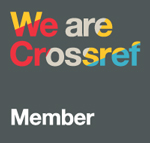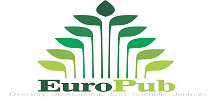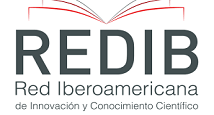Experimental prototype for learning wave phenomena
DOI:
https://doi.org/10.51440/unsch.revistaeducacion.2024.23.485Keywords:
Prototype, reflection, refraction, wave movement.Abstract
Physics is one of the sciences in which few students feel intrinsically attracted and motivated. The reasons are diverse, one of them being the lack of extrinsic motivation. As a result, it is observed that they have more difficulties in learning this area. For this reason, the present research was developed with the objective of designing and evaluating the effectiveness of a practical experimental prototype that facilitates learning in the content of mechanical waves, refraction and reflection, through a quantitative approach study, experimental type, on a sample of 8 eleventh grade students and the area teacher of the Ramón Alejandro Roque Ruiz school, from the community of Santa Isabel in the municipality of Somoto, selected with simple random probabilistic sampling. Three instruments were used to collect data that were applied to students and the teacher, which are: the questionnaire, the standardized test and the observation guide. The results show that the students improved their level of learning about wave phenomena, especially in the thematic field of refraction and reflection of mechanical waves.
Downloads
References
Babativa Novoa, c. a. (2016). Investigación Cuantitativa. Bogotá Fundación. https://digitk.areandina.edu.co/handle/areandina/3544
Campos, G. M. (2012). La observación, un método para el estudio de la realidad. Revista. https://dialnet.unirioja.es/servlet/articulo?codigo=3979972
Chávez, L. G. (5 de Julio de 2022). Boletín científico de la escuela preparatoria. https://repository.uaeh.edu.mx/revista/index.php/prepa37artcle/view/9480
Demarchi Sánchez, G. D. (2020). La evaluación desde las pruebas estandaizadas en la educación en latinoamerica. Corporación Universitaria Minuto de Dios. https://ojs.tdea.edu.co/index.php/encontexto/article/view/716
López Figueroa, A. D. (2019). APRENDIZAJE SIGNIFICATIVO EN LA ENSEÑANZA DE LOS FENÓMENOS DE REFLEXIÓN Y REFRACCIÓN DE LA LUZ DESDE UNA ESTRATEGIA DIDÁCTICA MEDIADA POR ACTIVIDADES EXPERIMENTALES. Medellin Colombia. https://repositorio.unal.edu.co/handle/unal/69639
López, P. L. (2014). Población muestra y muestreo. UCB-Cbba. http://www.scielo.org.bo/pdf/rpc/v09n08/v09n08a12.pdf
Meneses, J., & Meneses castillo, J. C. (2016). El cuestionario en la parte metodológica. Universidad de orbet. https://femrecerca.cat/meneses/publication/cuestionario/cuestionario.pdf
Novales Miranda, M. A. (2016). Protocolo de investigación III: La población de estudio. Revista Alergia Mexico. https://www.redalyc.org/pdf/4867/486755023011.pdf
porto, J., & Merino, M. (2013). https:// definición.de/prototipo/
Rios , R., & Jaison , E. (2021). Estrategia Didáctica para el fortalecimiento de la enseñanza del movimiento ondulatorio utilizando el simulador interactivo PhET en Grado 11. colombia. https://repositorio.udes.edu.co/handle/001/7958
Ruíz, A. (2016). Población y muestra. La entrevista como recolección de datos. http://m3todologia1.blogspot.com/2016/03/población-y-muestra.html#:~:text=Por%20su%20parte%20Hern%C3%A1ndez%20citado,se%20aplicar%C3%A1%20ning%C3%BAn%20criterio%20muestral.
Tipler, P. A. (2010). Física para la ciencia y la tecnología.
Downloads
Published
How to Cite
License
Copyright (c) 2023 Wilfredo Vázquez Méndez, Vidal de Jesús Cárdenas Rivera, Santos Hotoniel García Rivas, Cliffor Jerry Herrera Castrillo

This work is licensed under a Creative Commons Attribution-NonCommercial 4.0 International License.





















